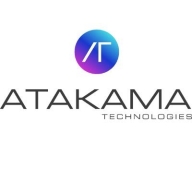

POWERHOUSE Application Performance Monitoring and Grafana compete in the application performance monitoring category. POWERHOUSE has the upper hand due to its intuitive interface and quick deployment.
Features: POWERHOUSE offers detailed monitoring, insightful analytics, and straightforward setup. Grafana provides extensive customization, integration capabilities, and granular control.
Room for Improvement: POWERHOUSE needs better alerting features, real-time data updates, and streamlined usability. Grafana has complexities in initial configuration, a steeper learning curve, and usability improvements.
Ease of Deployment and Customer Service: POWERHOUSE is known for quick deployment and responsive support. Grafana has extensive documentation but can be complex to deploy, with mixed reviews on customer service.
Pricing and ROI: POWERHOUSE is praised for competitive pricing and fast ROI. Grafana's flexible pricing model is cost-effective in the long run but comes with potentially higher initial costs.

Grafana is an open-source visualization and analytics platform that stands out in the field of monitoring solutions. Grafana is widely recognized for its powerful, easy-to-set-up dashboards and visualizations. Grafana supports integration with a wide array of data sources and tools, including Prometheus, InfluxDB, MySQL, Splunk, and Elasticsearch, enhancing its versatility. Grafana has open-source and cloud options; the open-source version is a good choice for organizations with the resources to manage their infrastructure and want more control over their deployment. The cloud service is a good choice if you want a fully managed solution that is easy to start with and scale.
A key strength of Grafana lies in its ability to explore, visualize, query, and alert on the collected data through operational dashboards. These dashboards are highly customizable and visually appealing, making them a valuable asset for data analysis, performance tracking, trend spotting, and detecting irregularities.
Grafana provides both an open-source solution with an active community and Grafana Cloud, a fully managed and composable observability offering that packages together metrics, logs, and traces with Grafana. The open-source version is licensed under the Affero General Public License version 3.0 (AGPLv3), being free and unlimited. Grafana Cloud and Grafana Enterprise are available for more advanced needs, catering to a wider range of organizational requirements. Grafana offers options for self-managed backend systems or fully managed services via Grafana Cloud. Grafana Cloud extends observability with a wide range of solutions for infrastructure monitoring, IRM, load testing, Kubernetes monitoring, continuous profiling, frontend observability, and more.
The Grafana users we interviewed generally appreciate Grafana's ability to connect with various data sources, its straightforward usability, and its integration capabilities, especially in developer-oriented environments. The platform is noted for its practical alert configurations, ticketing backend integration, and as a powerful tool for developing dashboards. However, some users find a learning curve in the initial setup and mention the need for time investment to customize and leverage Grafana effectively. There are also calls for clearer documentation and simplification of notification alert templates.
In summary, Grafana is a comprehensive solution for data visualization and monitoring, widely used across industries for its versatility, ease of use, and extensive integration options. It suits organizations seeking a customizable and scalable platform for visualizing time-series data from diverse sources. However, users should be prepared for some complexity in setup and customization and may need to invest time in learning and tailoring the system to their specific needs.
The APM solution fully integrated with Real End User Monitoring and Synthetic Monitoring.
Be able to monitor and diagnose quickly any application performance slowdown with a fully integrated APM and User Monitoring solution. Start from the End User eyes and application response time monitoring down to code analysis and diagnostic. It has never been so easy to discover the root cause of any slow response time.
With few clics you can drill down and fix a problem to avoid any end user dissatisfaction or complain. APM is now integrated with End User Monitoring for a full understanding of what is happening. You can now monitor End User Satisfaction in production.
We monitor all Application Performance Monitoring (APM) and Observability reviews to prevent fraudulent reviews and keep review quality high. We do not post reviews by company employees or direct competitors. We validate each review for authenticity via cross-reference with LinkedIn, and personal follow-up with the reviewer when necessary.